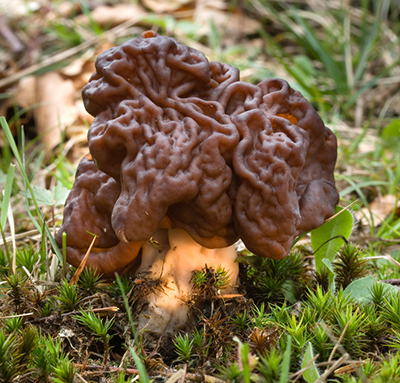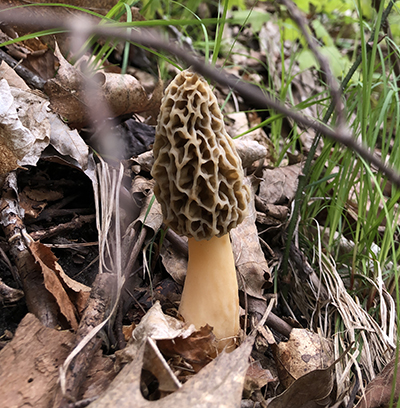
Is Your Morel True or False? Know the Difference.
2020 has been a late year for the mighty morel mushroom in Wisconsin. Lingering cool weather and late, widespread frosty nights have kept soil temperatures lower than usual, so folks are still finding this exquisite mushroom as the calendar turns its page to June. If you are still on the hunt, it’s good to be reminded that “false” morels (Gyromitra esculenta, Verpa, Hellvella, and Disciotis) are also still coming up in Wisconsin’s woods.
Like any mushroom, you should never pick or consume any that you cannot identify with 100% confidence, because false morels can make you very ill, or worse! And the false morel can can look close enough to the real thing, that even seasoned hunters may have to double-check before reaching for the frying pan.
Below are images of each, a false morel on the top and a true morel below. Each can look considerably different from the pictures here—their color, size, shape, and texture vary, but the true morel is always hollow, unlike the false morel.


We could go on and on (here is a great place to learn much more), but the four most important morel facts to know are;
- A false morel is NOT safe to eat.
- True and false morels are equally difficult to find, but you may find either in the same general location, wherever that is.
- Neither one makes a sound (prior to the frying pan, that is, and it’s only relevant to the true morel).
- They are both utterly without morals (not withstanding the sinfully decadent pay-off of gobbling fresh-fried true morels after a long spring day foraging your woods).
